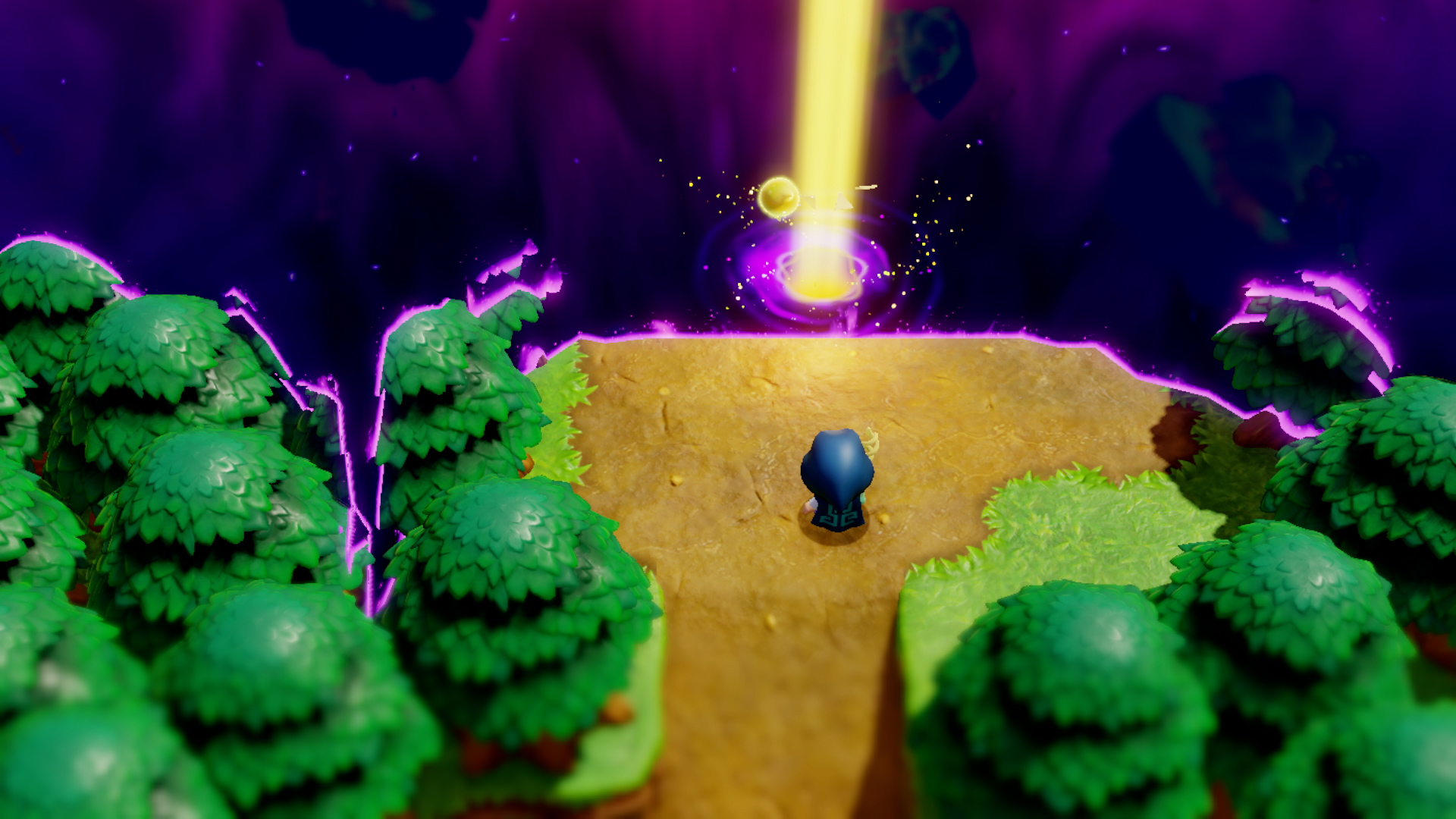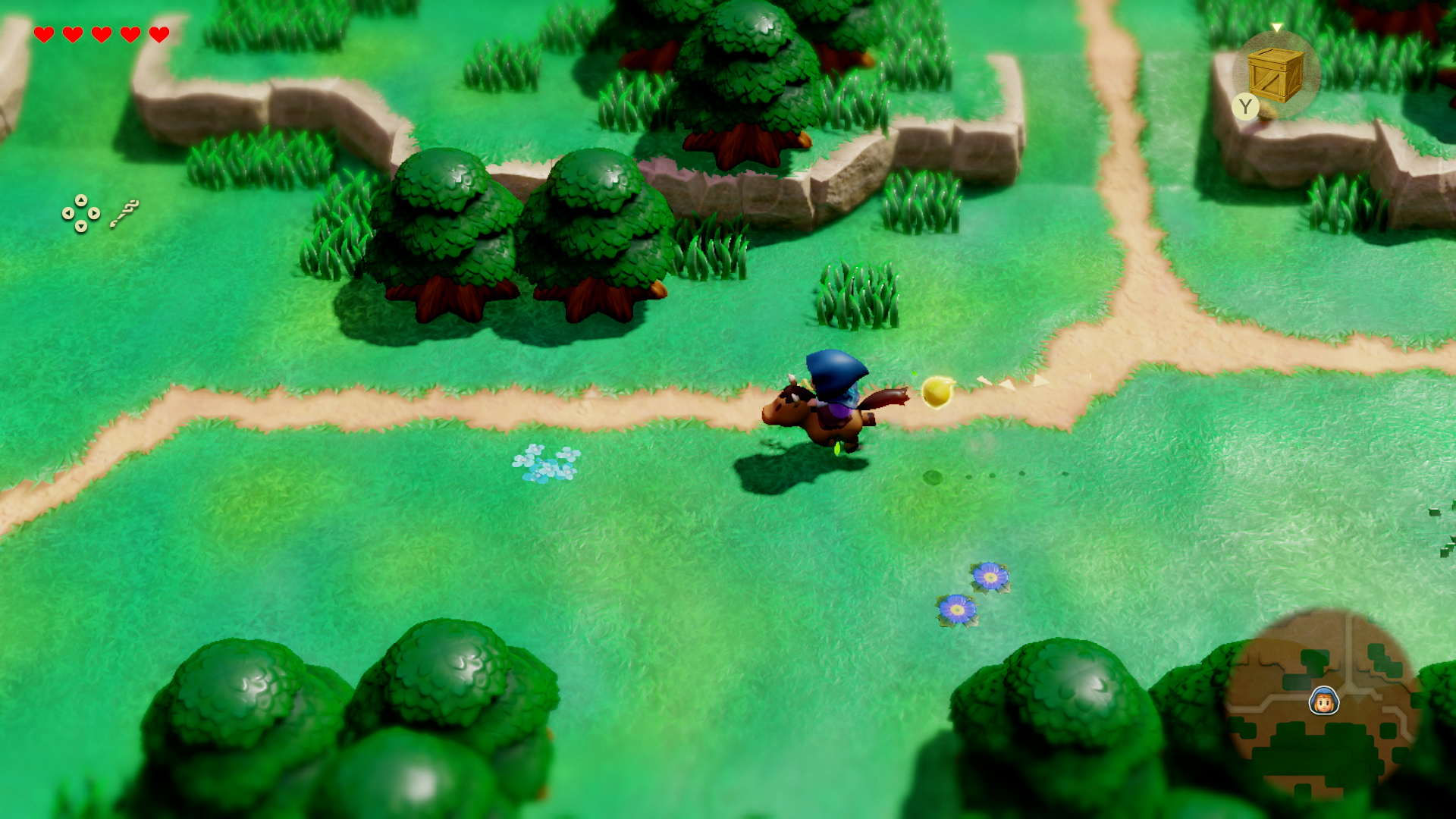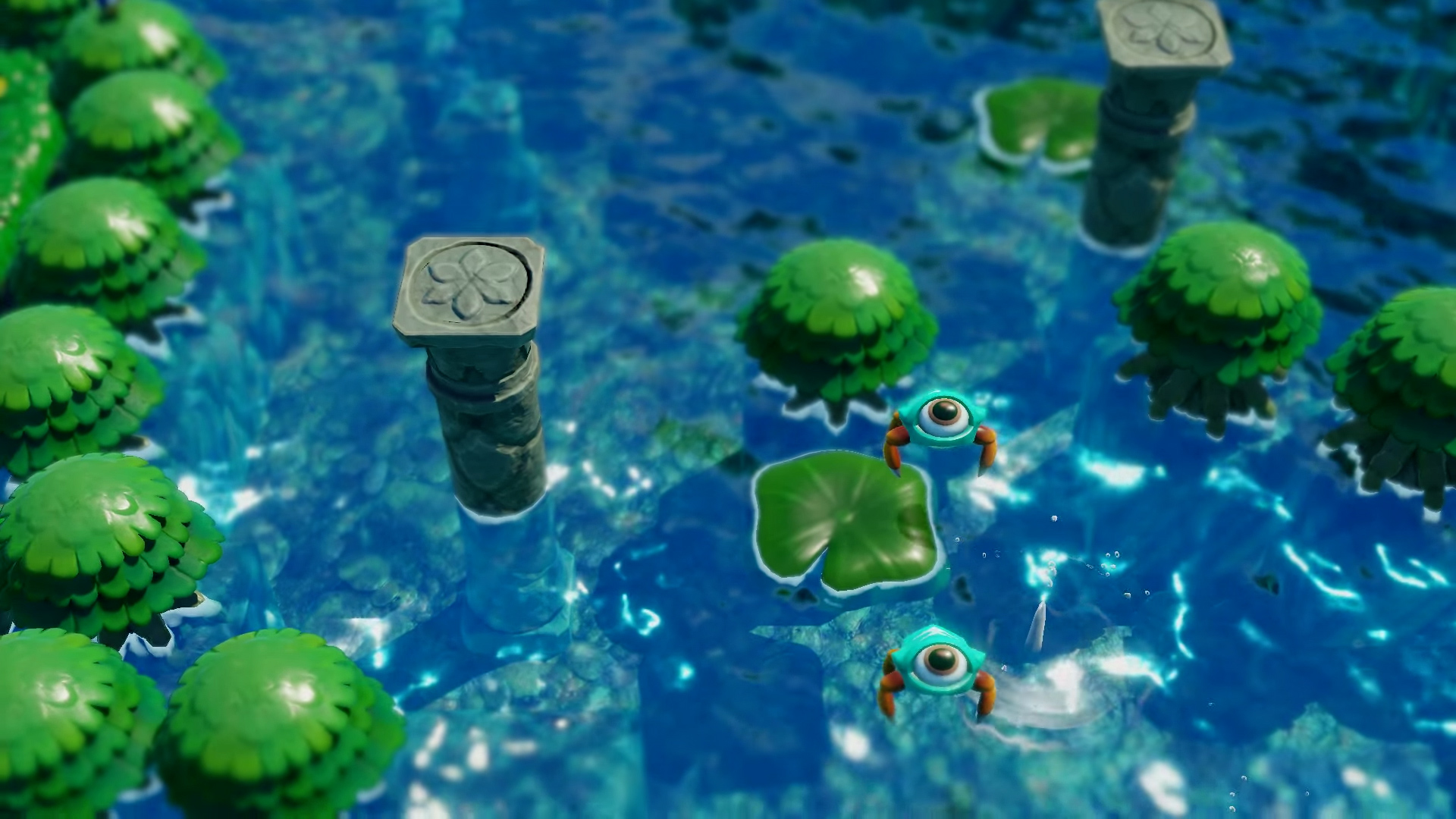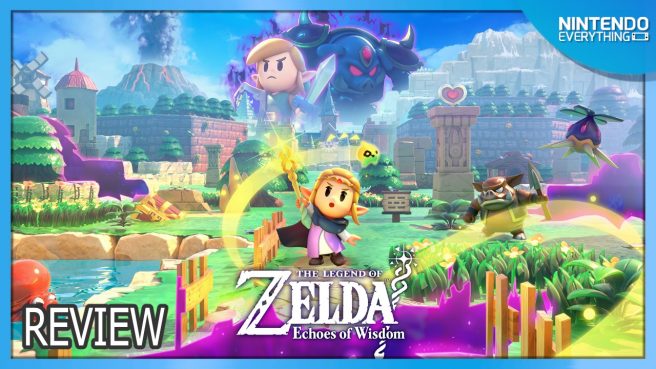[Review] The Legend of Zelda: Echoes of Wisdom
System: Switch
Release date: September 26, 2024
Developer: Grezzo / Nintendo
Publisher: Nintendo
It’s no secret that the Legend of Zelda franchise has seen a big resurgence on Switch. The release of Breath of the Wild in 2017 changed the direction of the series for many years to come – the effects of which we’re still seeing today. For many years, fans wondered if games like Breath of the Wild and Tears of the Kingdom would push traditional 2D Zelda titles to the wayside for good. We didn’t have a definitive answer for the longest time, but this week, we finally got it – The Legend of Zelda: Echoes of Wisdom is finally here, and it proves that 2D Zelda not only is here to stay, but has a place alongside Breath of the Wild and Tears of the Kingdom as one of the better games in the series. Echoes of Wisdom is a clever, innovative title that brings forth a new and fully fleshed-out way to play the game.
As shown in the overview trailer, Echoes of Wisdom starts with an interesting premise. For the first time, Link is fighting Ganon at the beginning of the game, and takes him out swiftly. After his defeat, rifts begin consuming the world, and Link himself falls victim to one – but not before shooting an arrow at Zelda, freeing her from her crystal prison. This puts Zelda in charge of Hyrule’s fate, and the region is slowly but surely being consumed by these mysterious purple rifts. Shortly afterward, Zelda meets Tri, a fairy who serves as her partner for the duration of the game. So rather than playing as Link to save Zelda, it’s the other way around. I’m a bit surprised that it’s taken this long for such a concept to appear in a main series game, but it’s a welcome change regardless.

Echoes are the titular mechanic featured in the game. Using the Tri Rod, Zelda can copy and learn objects in the overworld and even enemies she defeats. From there, she can re-summon these objects and enemies infinitely. You can use Echoes to solve puzzles, defeat enemies, and even in some cases restore your health, depending on what you summon. There are tons of Echoes in this game, and you’ll find yourself learning a new one every few minutes, in some cases. At the beginning of the game, you can only summon three echoes at a time, but as you progress the story you’ll unlock more slots so you can summon more echoes (and better ones, too). Given the quantity of echoes, you’ll have to navigate through menus to choose the one you want to use. For the most part, this is smooth sailing – you can categorize your echoes by most used, last used, and the like. But once you start loading up on them, it takes a few seconds to find and pick out the one you’re looking for. The sheer quantity also means it’s easy to overlook certain echoes, including ones that could potentially help you during a puzzle. It’s a very minor complaint, that is, but for the most part the sorting options will save you lots of time and prevent you from looking over your Echoes for too long.
Where Echoes of Wisdom starts taking inspiration from Breath of the Wild and Tears of the Kingdom is its puzzles. In a very similar way to how Breath of the Wild works, in this title, you can use many combinations of echoes to solve puzzles in a variety of ways. For example, in the first dungeon, I encountered a giant boulder blocking the way. Thinking the game was testing my echo-stacking ability so soon, I made a giant tower of wooden crates, tables, beds, and shrubs until I could climb up. As it turns out, you were supposed to approach the giant boulder with Tri, who then gains the ability to lock on to big items and move them. My solution wasn’t the intended one, but it still worked – and this is a concept that recurs throughout the game. As long as you’re creative with your echoes, you can solve just about any puzzle presented to you – as long as you have the right Echoes, that is. And that encourages you to fully explore areas, because the more you explore, the more echoes you’ll come across to learn. And the more you learn, the more creative you can get with your puzzle-solving.

Echoes aren’t the only new ability Zelda has, though. Like I mentioned earlier, her fairy partner Tri can use the Bind ability to latch onto objects. You can do things like rip shields off statues, redirect giant boulders, and move statues onto switches. Some of these puzzles can be solved via Echoes anyway, but Bind adds an even deeper level of strategy to solving the game’s puzzles. Then there’s the Swordfighter ability, which Zelda also unlocks fairly early on. Zelda herself can’t fight without echoes – she doesn’t even have a weapon she can use. This means there are often situations where nearby enemies are a bit too aggressive and she can’t summon Echoes in time to protect herself without taking damage. Thankfully, she can transform into a Swordfighter mode (where she looks like Link) to gain the ability to perform sword slashes without using Echoes. Zelda can only assume Swordfighter form for so long, however, before the energy gauge runs out. Certain enemies and pots drop energy for the Swordfighter gauge, so you won’t be running out as long as you only use the ability when needed.
Echoes of Wisdom boasts the largest overworld of any 2D Zelda game by far. It’s several times bigger than Link’s Awakening’s Koholint Island, and that’s saying something since it’s already of a decent size. It’s easy to lose yourself in exploring this huge map, finding tons of secrets using many combinations of echoes. That’s not to mention the Still World, an alternate map that adds even more exploration to the mix. One notable aspect of the game is the return of classic dungeons, which were very much missed by fans in Breath of the Wild and (to a lesser extent) Tears of the Kingdom. Scattered throughout this version of Hyrule are many waypoints, which you can easily use as fast travel. In fact, all you have to do is open up the menu and pick which one to warp to – which streamlines side quests and further encourages exploration. You can also use the map to easily keep track of Heart Pieces and other collectibles you’ve already obtained, which makes finding the rest of them that much easier.

As you can probably already tell, Echoes of Wisdom takes on a similar general aesthetic to the Link’s Awakening remake. Even though that art style originated in 2019, it looks as good as new and better than ever in this game. There’s an impressive attention to detail across the board here; the characters and especially the environments are incredibly detailed and pleasing to look at. Interiors and dungeons especially have all sorts of small details to look at. The music, much like Link’s Awakening as well, focuses on natural-sounding instruments, and I’ve already got a few tracks from the game stuck in my head as I’m writing this. Pair the gorgeous art style with the newfound emphasis on exploration (plus the huge world map) and you’ve got a genuinely compelling version of Hyrule.
Echoes of Wisdom, drawing another element from Breath of the Wild, is also home to several side quests. These certainly add up over time, too, to the point where full completion of the game will probably take you somewhere around 35 hours, give or take. There’s also a fairly simple cooking system that lets you combine two ingredients to make smoothies. These drinks restore hearts, but may offer additional effects like increasing defense power or making you glow depending on which ingredients you use. Finally, Echoes of Wisdom also unlocks Hero Mode as a setting in the options menu from the very beginning. If you aren’t careful, you’ll die in the first few minutes of the game – which goes to show that Hero Mode is a true challenge this time around. You can turn it on and off anytime without having to restart your save file.
Much like the Link’s Awakening remake from 2019, The Legend of Zelda: Echoes of Wisdom does suffer from a few minor technical hiccups. For the most part, the game targets a fluid 60 frames per second in both docked and handheld modes. Indoors, this 60 frames per second is mostly retained, with only minor drops here and there depending on what’s on-screen at any given moment. Outdoors, however, is a different story – the game often noticeably dips into the 30s, which is noticeable if you have a sharp frame rate eye like me. Weather effects like sandstorms dip the frame rate a bit farther, but never to a level where the game is unplayable. If you’re the kind of person who can’t tell if something is running at 30 or 60 frames per second, then you probably won’t mind this much. If you’d like more details on the frame rate, you can check out details regarding Digital Foundry’s analysis here.
The Verdict

The Legend of Zelda: Echoes of Wisdom is living proof that 2D Zelda can stand alongside other modern entries in the series. Grezzo already proved themselves capable with their Link’s Awakening remake, but now there’s no doubt – if Grezzo does indeed remain the primary developer of future 2D Zelda games, then this branch of the series is in good hands. Echoes of Wisdom blends together mechanics from classic 2D entries and Breath of the Wild without leaning into the latter too much. It’s an easy recommendation to any fan of the series, and I’m really excited to see what Grezzo does next with Zelda – most likely on Nintendo’s next console.
